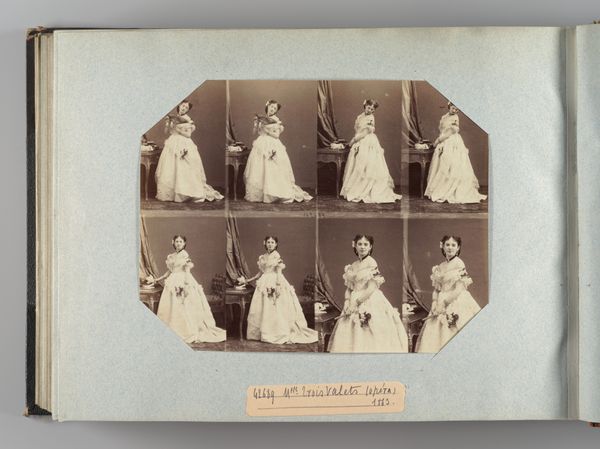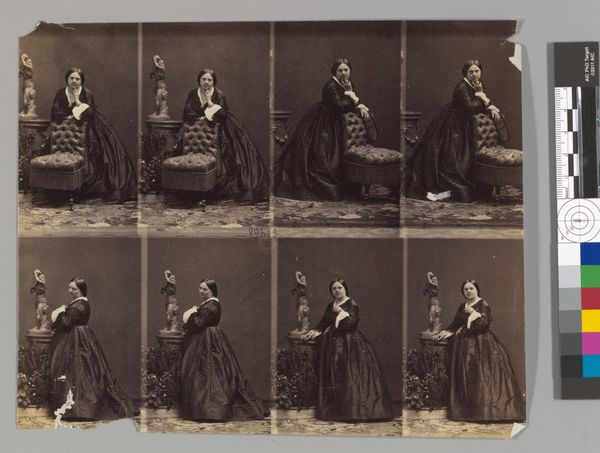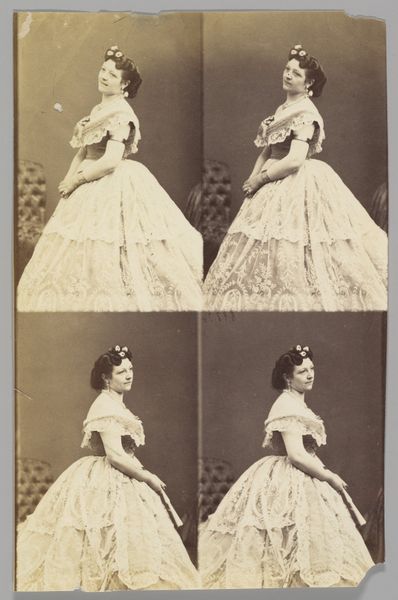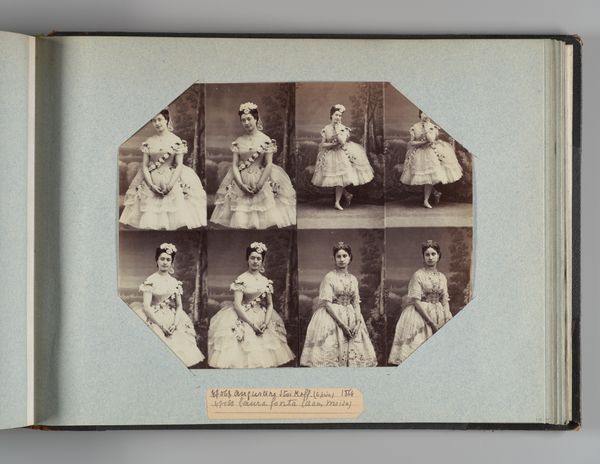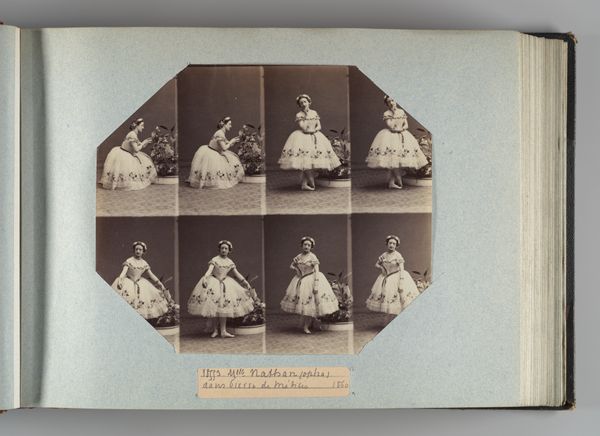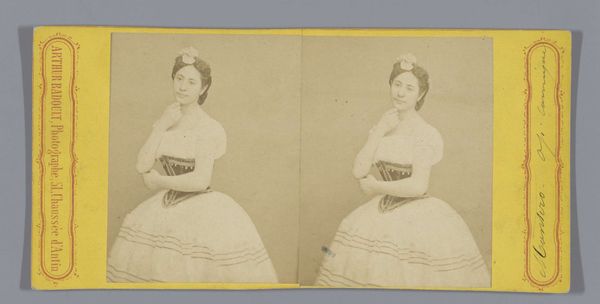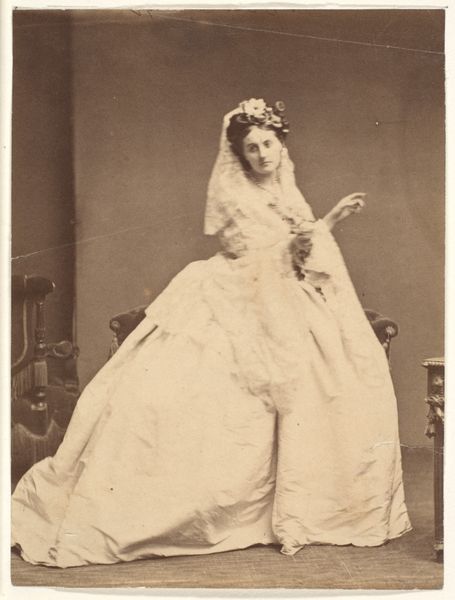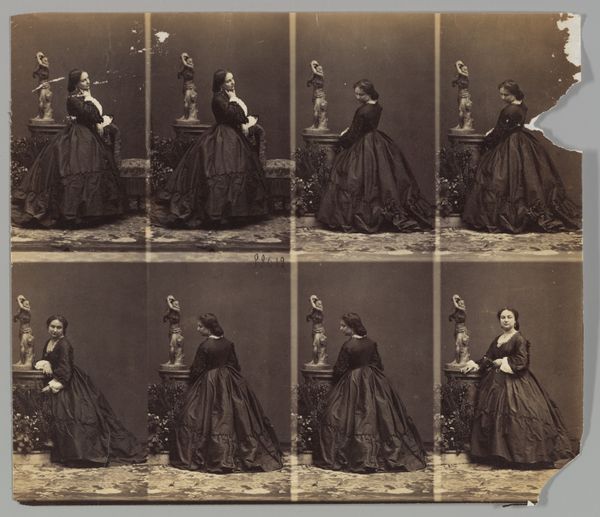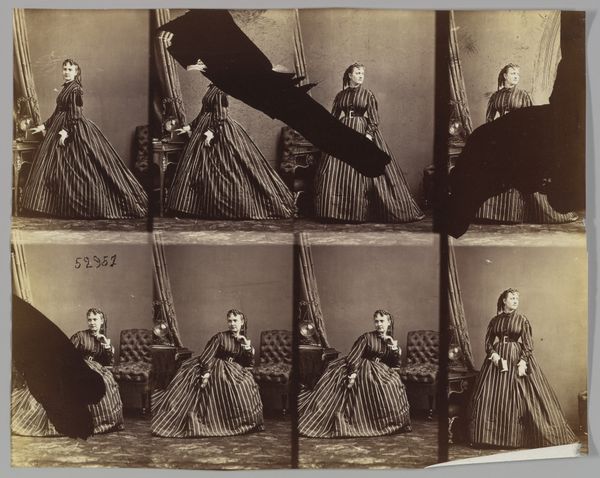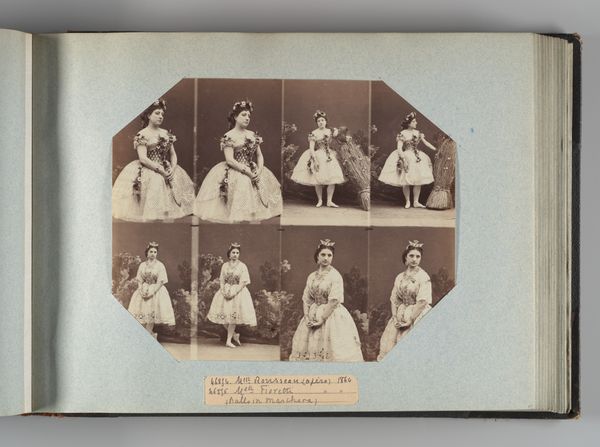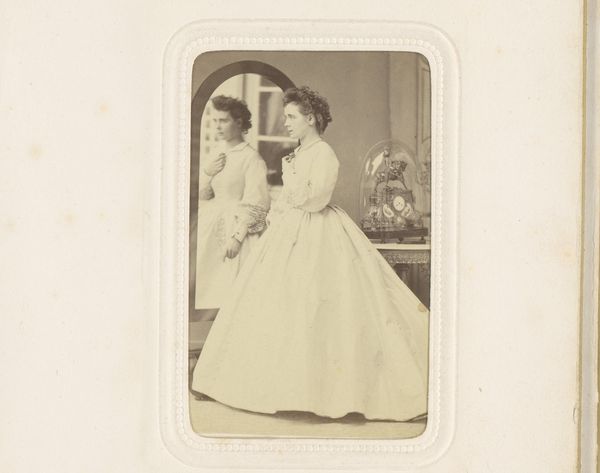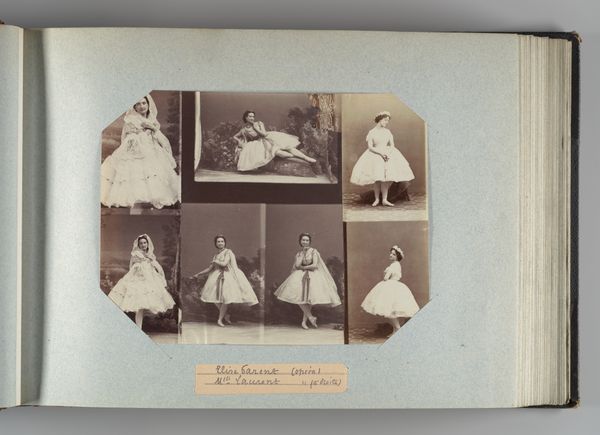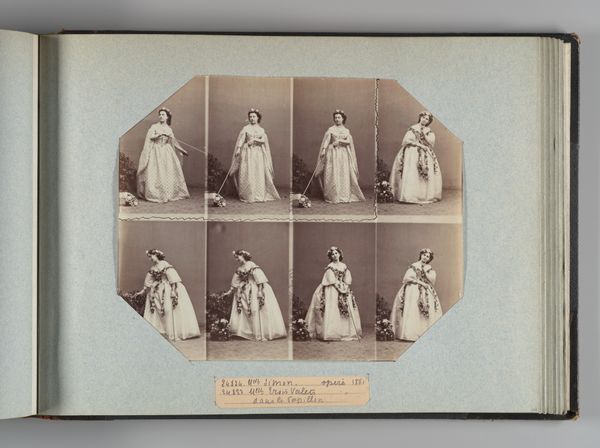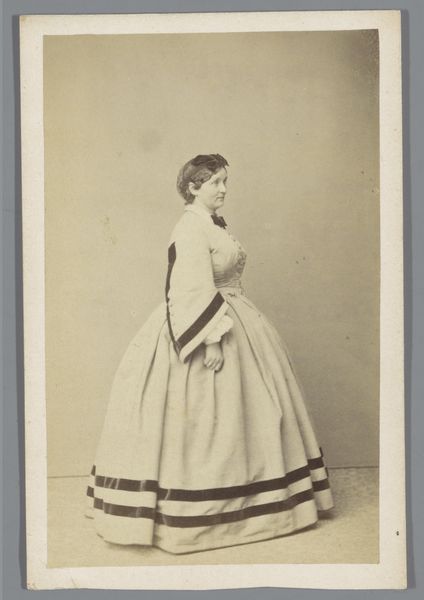
photography, albumen-print
#
portrait
#
archive photography
#
photography
#
historical fashion
#
men
#
nostalgic styling
#
albumen-print
Dimensions: Image (.2.54-64143): 18.4 x 24.8 cm (7 1/4 x 9 3/4 in.) Album page: 26.2 x 34.8 cm (10 5/16 x 13 11/16 in.)
Copyright: Public Domain
Editor: This is "Demi-Monde I 56", an albumen print made sometime between 1858 and 1868 by André-Adolphe-Eugène Disdéri, currently at the Metropolitan Museum of Art. It's a fascinating array of images of what appears to be the same woman in a beautiful gown, repeated almost like a multiplication. I'm curious – what statement do you think Disdéri was making by repeating the figure in this way? Curator: That's a great question. The repetition isn't arbitrary. Consider the context: Disdéri was a pioneer in carte-de-visite photography, making portraits accessible to a wider public. Reproducing a single image multiple times on one card drove down the cost per image, democratizing portraiture, a domain previously reserved for the wealthy. Now think about the title, "Demi-Monde." What does that term suggest about social status? Editor: Ah, so the "Demi-Monde," referring to women on the fringes of high society, became increasingly visible through this mass production. By making their image affordable, photography played a part in shaping public perception. Almost like early celebrity culture? Curator: Exactly! And it goes further. These images weren’t just passive records. They actively constructed identities. The repeated poses, the elaborate costumes – they projected a particular image, an aspirational identity for these women, and perhaps even for those who consumed the image. Consider the role of photography at this time in both documenting and influencing social trends. Editor: So, this photograph isn't just a portrait, but a commentary on the rise of a certain social class and the evolving role of photography itself in shaping societal perceptions? Curator: Precisely. The image's inherent multiplicity mirrors the subject's negotiation of visibility and social standing in the public sphere. The act of multiplication isn’t just technical, but social and political. Editor: This has really broadened my perspective on the photograph, seeing it not just as an image, but as a cultural artifact embedded in social dynamics and the democratizing potential of photography. Thank you. Curator: My pleasure. Thinking about art's public role always yields new understandings.
Comments
No comments
Be the first to comment and join the conversation on the ultimate creative platform.
